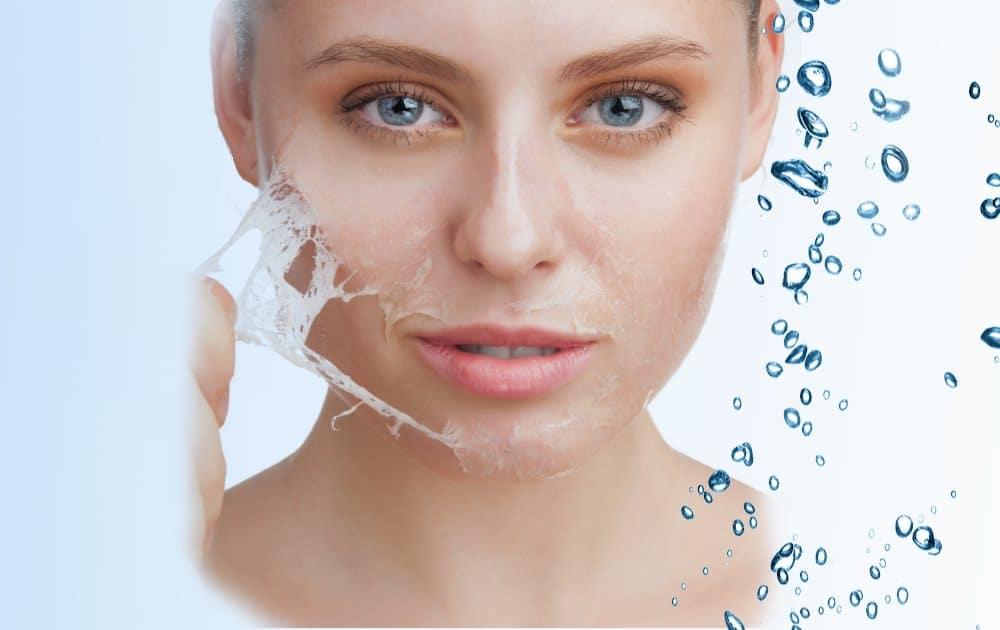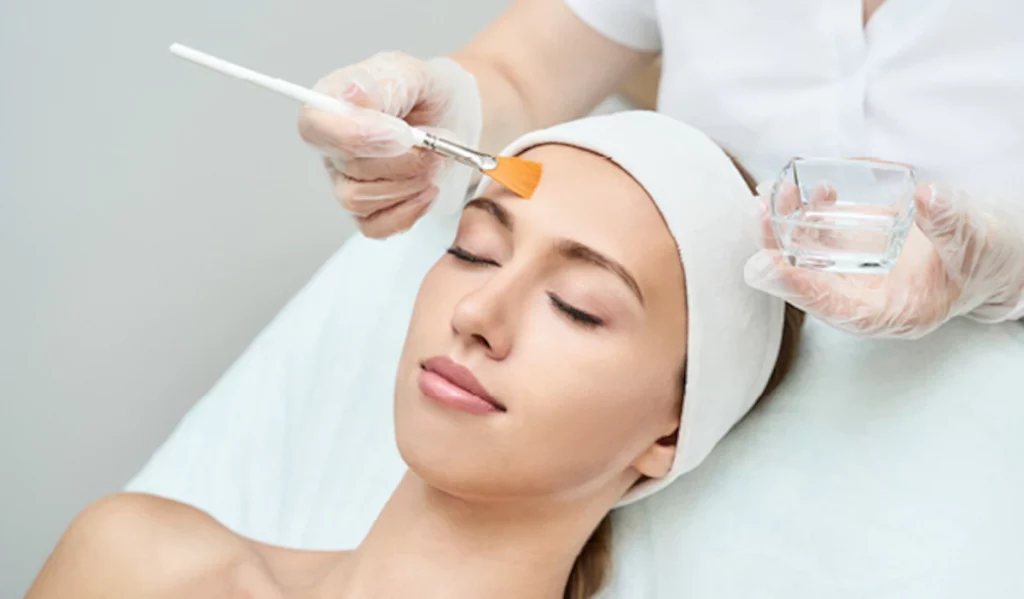If you’ve undergone a chemexfoliation, you’re probably wondering whether you can use red light therapy after a chemical peel or if any other cosmetic procedures are safe after this treatment.
Since chemical peels treat scars, wrinkles, and discolored skin, combining them with other cosmetic procedures such as reg light therapy might get better and faster results.
But is this 100% true? Let’s get started and discover if you should do a red light therapy treatment after a chemical peel.

Source: annamedical.co.uk
Can You Do Red Light Therapy After a Chemical Peel?
Using red light therapy after a chemical peel is a great combo that many beauty salons offer, so the answer is yes, you can use it. This combo is safe and good for many skin concerns and might result in a fresh, rich complexion.
Using red and blue light might help muscles recover and regenerate. It took time for the beauty industry to see that this is a painless and safe method for possible skin healing.
Red light therapy is a noninvasive and nontoxic way of possibly combating signs of aging and sun damage. It might help the skin by stimulating the production of collagen and elastin, which help maintain the skin look hydrated, tight, and plumped with a youthful look.
It might work best for aged skin, acne, scars, and other skin conditions. Most importantly, red light therapy has virtually no side effects and is considered safe.
It may seem complicated at first, but combining chemical peels and red light therapy is an effective way that might target and possibly heal many skin concerns, from wrinkles, dark spots, hyperpigmentation, and fine lines, to loss of elasticity in the skin.
Depths of chemical peels and sessions
Chemical peels are skin-resurfacing treatments. You can choose one of three depths of chemical peel depending on the skin issue you have:
- Light chemical peel – It might remove the outer layer of your skin (epidermis) and treat fine wrinkles, uneven skin tone, acne, and dry skin.
- Medium chemical peel – It might remove skin cells from the epidermis and form portions of the middle layer of your skin, the dermis. It might also treat acne, wrinkles, and uneven skin tones.
- Deep chemical peel – It might remove the skin cells more in-depth. It might also treat deeper scars, wrinkles, and precancerous growths.
The skin needs more time to recover after you’ve done this procedure. So, this is a simple guide we think you should be aware of.
Red light therapy can be applied before your chemical peel or 24 to 48 hours after a light chemical peel. Wait at least 72 hours after a chemical peel before you do red light therapy unless directed otherwise by a dermatologist. You can use red light therapy immediately following the deep chemical peel if the peeling agent has been completely neutralized.
This is only a general guide, so it is best to consult a doctor or a dermatologist for when and how to use red light therapy after a chemical peel.

Source: dwtc.com
Why Red Light Therapy?
Red light therapy might have many benefits and is considered safe with no possible side effects. It might be safe for all skin types and can be used more regularly. Red light therapy doesn’t use ultraviolet (UV) light. Therefore, it cannot cause or be the reason for activating the cancer cells.
Regarding the benefits, red light therapy might be used to possibly improve many skin problems and conditions. It might be excellent for treating wrinkles, acne, sun-damaged skin, scars, and redness. It might also help reduce the appearance of scars, stretch marks, wounds, and mild scars.
Red light therapy might also help treat more serious skin conditions such as psoriasis, rosacea, acne, eczema, and others. Red light therapy might help maintain these conditions under control.
Overall, red light therapy might help you improve your skin by increasing collagen and elastin production, reducing inflammation, and possibly boosting your skin cells with energy to maintain and regenerate themselves.
Consistency
Usage always depends on the skin issues you want to address, from treating acne and uneven skin tones and minimizing the look of scars and wrinkles to healing long-term sun-damaged skin and other severe skin conditions.
Red light therapy is not a one-time treatment for most skin concerns and conditions. You’ll need to practice it one to three times a week for a longer period.
Three to five sessions of about 10 to 20 minutes a week for four months will show the best impact and fastest results on your skin. Although, it can be different for many people.
Red light therapy might help your skin from the first session, but the results will last longer if you continue your treatment.
The more frequent sessions, the better and more drastic the results will be. Increasing the length of the sessions is not more efficient. So, it is best to stick to the 10 to 20 minutes length.
Red light therapy can also be practiced daily since it might virtually have no side effects, zero risks, and is non-invasive.
Conclusion
Well, we have come to the very end of this short article, and to recap, can you do red light therapy after a chemical peel? You most certainly can. It might be the best combo for treating and maintaining your skin.
Not only might this combo be very efficient and impactful, but it might also be safe and risk-free. It might help your skin get that fresh and youthful look.
But, we always recommend you consult your doctor or dermatologist about red light therapy after a chemical peel. Contacting the specific peel company will give you directions on what their LED protocols are.
The red light therapy method might depend on what kind of peel you’ve had. Do not apply LED therapy after a chemical peel without a dermatologist’s permission.

Hello! I’m Nicky Rodgers.
Almost a decade ago, I got excited about the idea of employing alternative methods like red light therapy to create a healthier life.
To learn more about it, I did my Certified Light Therapist course from Photonic Therapy Institute and started looking into the intricacies of how light therapy influences several bodily processes. Before I knew it, my interest had become an obsession which resulted in this extensive blog.
Here, I offer countless well-researched articles to help you understand the benefits and uses of light therapy. I hope this information gives you a head start in your wellness journey.
